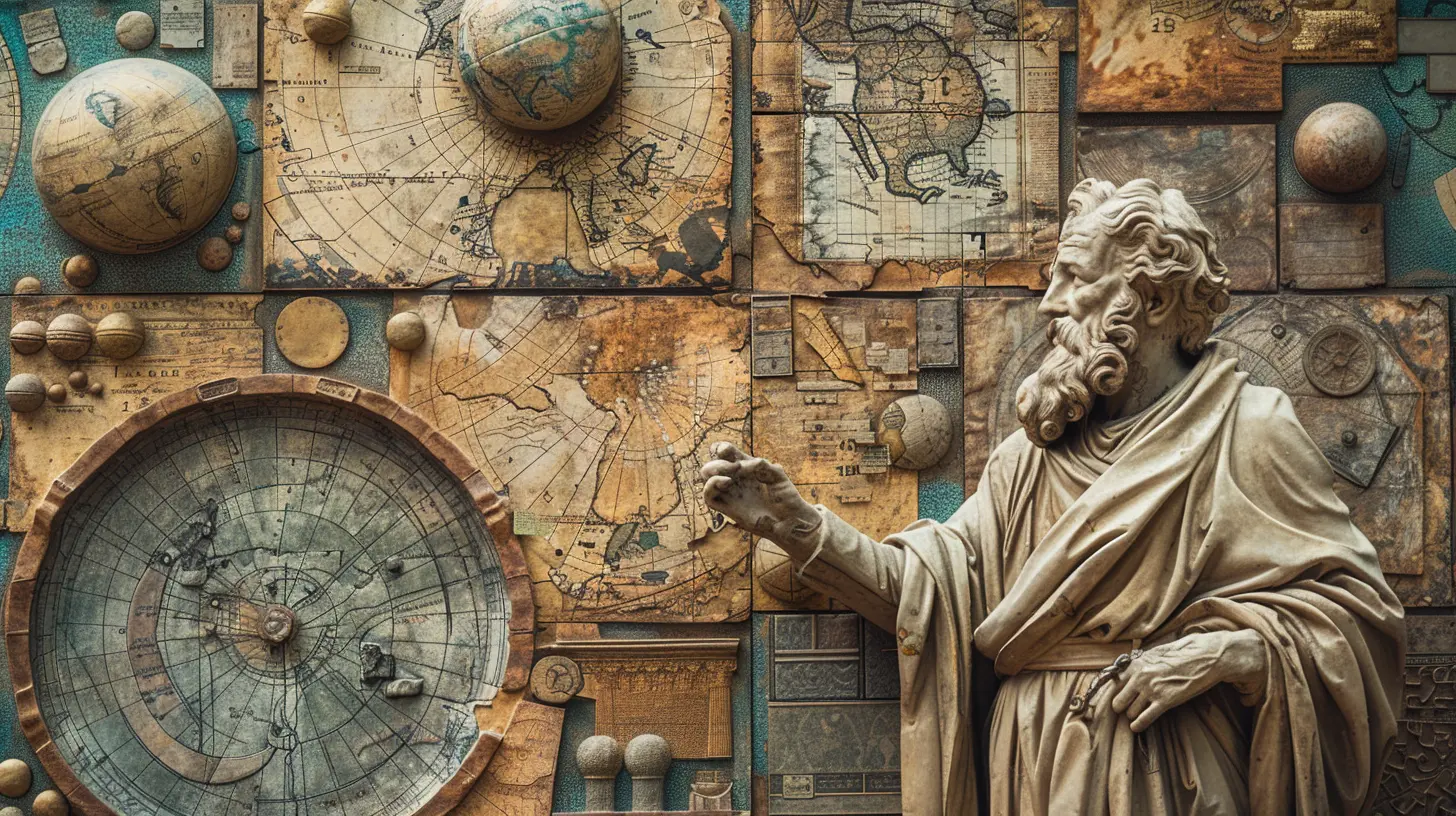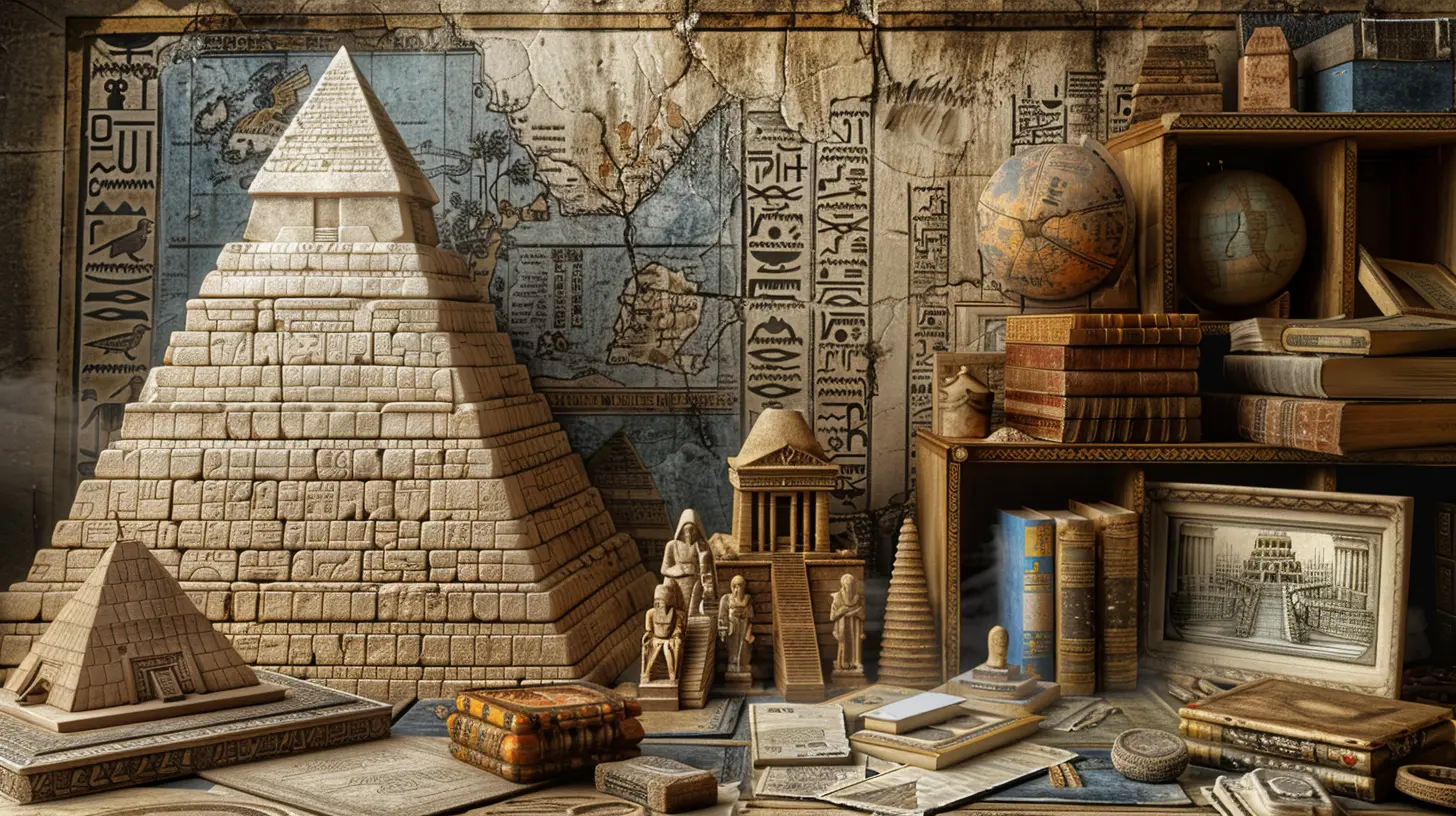The History of Mathematics: From Ancient Civilizations to Modern Times
17 July 2025
Mathematics is everywhere! It’s in the way we count change at the grocery store, the way we measure distances, and even in the technology powering our smartphones. But have you ever stopped to think about where it all began? The history of mathematics is a fascinating journey that dates back thousands of years, evolving from simple counting systems to the complex theories that shape our modern world.
Let’s take a walk through time and explore how mathematics has grown from its humble beginnings to the powerful discipline it is today. 
Ancient Beginnings: Counting and Basic Arithmetic
Before written records existed, early humans needed a way to keep track of things—food supplies, the number of animals in a herd, or days between seasons. The earliest form of mathematics likely emerged from this fundamental need.Tally Marks and Early Counting Systems
Archaeologists have found bones with tally marks dating back over 30,000 years. The Ishango Bone, discovered in Africa, is one of the oldest known mathematical artifacts. It suggests that early humans were using a form of arithmetic long before formal number systems existed.Egyptian and Babylonian Mathematics
By 3000 BCE, the Egyptians and Babylonians had developed more structured mathematical systems. The Egyptians used mathematics primarily for practical applications like building pyramids and surveying land after the Nile’s floods. They even had a form of multiplication and division!The Babylonians, on the other hand, used a base-60 system—which is why we still have 60 minutes in an hour and 360 degrees in a circle today. They also created the earliest recorded mathematical tables, laying the groundwork for algebra. 
Greek Mathematics: The Birth of Logical Thinking
If we’re talking about mathematics, we can’t skip over the Greeks. They didn’t just use math for practical purposes; they wanted to understand why math worked the way it did. This shift towards logical reasoning changed everything.Pythagoras and His Famous Theorem
Ever heard of the Pythagorean Theorem? It’s named after Pythagoras, a Greek mathematician who believed numbers had almost mystical properties. His theorem (\(a^2 + b^2 = c^2\)) is still taught in schools today and is fundamental in geometry.Euclid: The Father of Geometry
Euclid, another Greek thinker, compiled many known mathematical ideas into a book called "Elements." This work became the foundation for modern geometry. His logical approach to proving theorems shaped mathematical thinking for centuries.Archimedes: Genius of the Ancient World
Archimedes made groundbreaking discoveries in both mathematics and physics. He developed formulas for calculating areas, volumes, and even an early understanding of calculus-like principles. His famous "Eureka!" moment happened when he realized how to measure the volume of irregular objects using water displacement.
Indian and Chinese Contributions: Advancing Numerals and Algebra
India: The Birthplace of Zero and Decimal System
One of the most important breakthroughs in mathematics came from ancient India—the concept of zero. Indian mathematicians developed a place-value decimal system, which eventually spread worldwide. Imagine doing math today without zero—it’s nearly impossible!A mathematician named Brahmagupta was among the first to define how zero and negative numbers worked in calculations. His work laid the foundation for modern arithmetic.
Chinese Mathematics: Precision and Practicality
The ancient Chinese were also highly advanced in mathematics. They developed methods for solving equations, used negative numbers earlier than Europeans, and even had a form of Pascal’s Triangle centuries before it appeared in Europe.The Nine Chapters on the Mathematical Art, written around 200 BCE, contained instructions for solving real-world problems using algebra and geometry. 
Islamic Golden Age: Preserving and Expanding Knowledge
During the Islamic Golden Age (8th to 14th century), scholars in the Middle East translated and preserved Greek and Indian mathematical texts. But they didn’t just keep old knowledge—they expanded upon it.Al-Khwarizmi and Algebra
Ever wondered where the word "algebra" comes from? It’s from the Arabic word "al-jabr," which appears in a book written by Al-Khwarizmi in the 9th century. His work laid the foundation for algebra as we know it today. To this day, his contributions influence everything from engineering to finance.Trigonometry and Astronomical Mathematics
Islamic mathematicians made advancements in trigonometry, helping astronomers measure distances between stars and navigate the seas. They introduced sine, cosine, and tangent functions, which are essential in modern physics and engineering.The European Renaissance: Mathematics Blossoms
By the 16th and 17th centuries, Europe experienced a rebirth of mathematical thought. New ideas emerged, setting the stage for modern mathematics.Fibonacci and the Famous Sequence
Leonardo Fibonacci introduced the Fibonacci sequence to Europe, although it had been known earlier in India. This sequence appears in nature, from the arrangement of sunflower seeds to the spiral of galaxies.Descartes and the Birth of Analytical Geometry
René Descartes developed coordinate geometry, which allowed algebra to be applied to geometry. Imagine trying to create computer graphics or animations without this concept!Newton and Leibniz: The Creation of Calculus
One of the greatest debates in math history is between Isaac Newton and Gottfried Wilhelm Leibniz—both of whom independently developed calculus. Whether you love or hate calculus, we owe many modern technologies to their discoveries. Calculus is essential in physics, engineering, and even economics.Modern Mathematics: The Digital Age and Beyond
The Power of Computation
As we entered the 20th and 21st centuries, mathematics became even more vital in technology. The development of computers relied heavily on mathematical logic, algorithms, and number theory. Without these principles, we wouldn’t have the internet, encryption, or artificial intelligence.Mathematics and Physics: The Unbreakable Bond
Einstein’s theory of relativity and quantum mechanics pushed math to new frontiers. Equations now describe everything from the vastness of space to the tiniest particles inside atoms.Final Thoughts: Mathematics Continues to Evolve
From tally marks on bones to supercomputers predicting the weather, mathematics has come a long way. Every civilization contributed to its growth, shaping the way we understand the world.So the next time you solve a simple math problem or use a calculator, take a moment to appreciate the thousands of years of human intelligence that made it all possible. After all, math isn’t just numbers—it’s the language of the universe.
all images in this post were generated using AI tools
Category:
Math SkillsAuthor:

Bethany Hudson
Discussion
rate this article
1 comments
Barrett Powell
Explore the journey of math—every number tells a story of human ingenuity!
August 2, 2025 at 4:24 AM

Bethany Hudson
Thank you! Indeed, each number reflects our quest for understanding, shaping civilizations throughout history.


